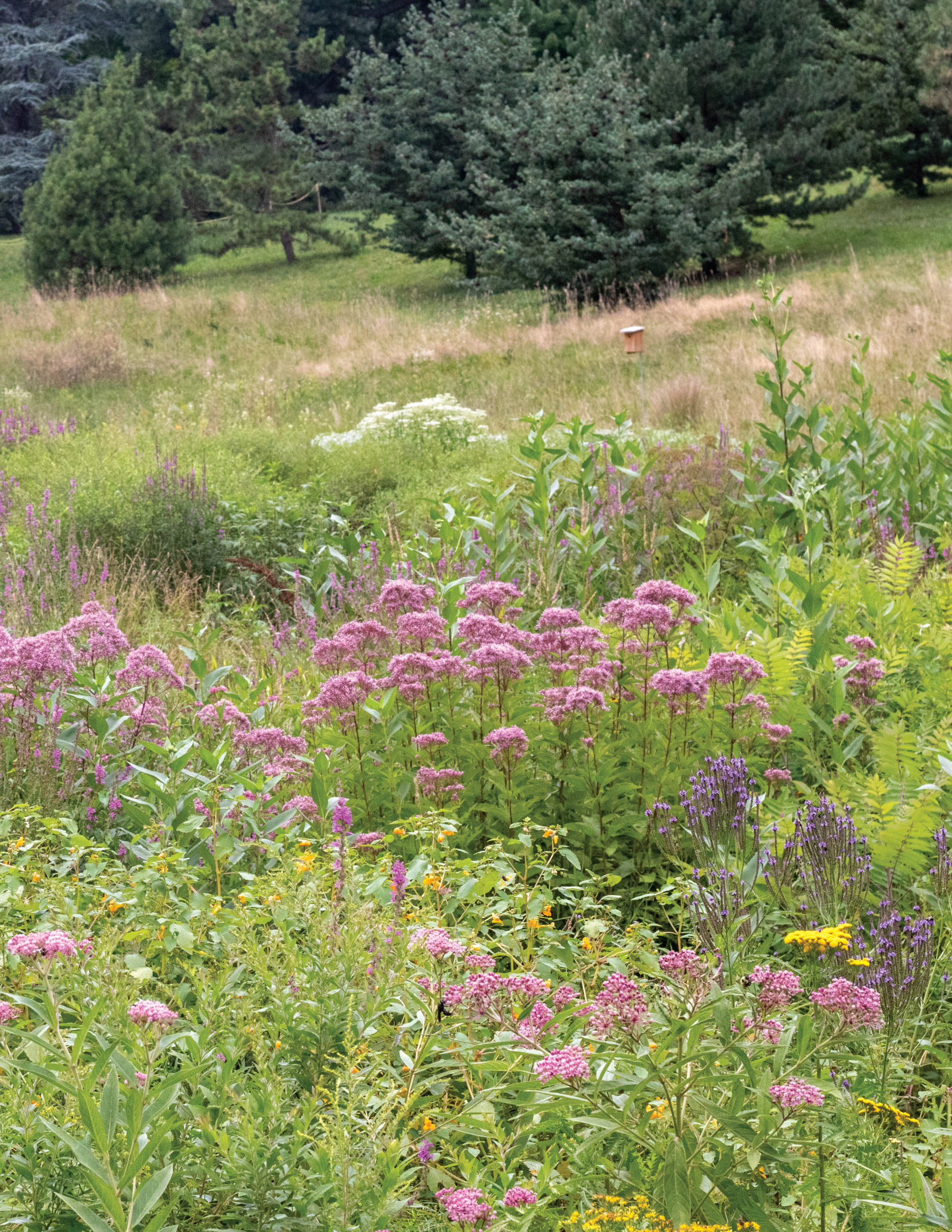Long summer evenings are ideal for observing the Arboretum’s nocturnal creatures beginning their activities. Each evening, foxes and coyotes emerge and prowl after keen eared voles and rabbits. Skunks dig for grubs while raccoons wash their paws and drink from the ponds. American mink slip through the wetlands while muskrats chew on plant tubers. Overhead, owls swoop low across meadows. Swarms of insects fly up from the grass, and bats dart to and fro in the night air.
Although difficult to see and harder to identify, bats as a whole constitute 20% of mammalian diversity on earth. Unfortunately, some people consider them no more than unwanted attic guests, as scary animals with mythical penchants for drinking blood and tangling in peoples’ hair. These misconceptions ignore their fascinating life history. Bats play important ecological roles, roles sadly under-appreciated in this challenging urban ecosystem.

Habitat
Acoustic surveying this summer revealed the Arboretum is home to at least four bat species. These are big brown bats (Eptesicus fuscus), hoary bats (Aeorestes cinereus), silver haired bats (Lasionycteris noctivagans), and eastern red bats (Lasiurus borealis). These bats benefit from the valuable habitat provided by our urban landscape. During the day, Arboretum trees provide places for them to sleep and hide from predators. They squeeze into cracks in tree trunks, cluster underneath bark, and even hang upside down among the rustling leaves.
At night, the bats leave the safety of their roosts to hunt (these four species feed primarily on insects). All four seem to prefer the open fields and meadows abutting the Arboretum’s streams, ponds, and wetlands. This is not surprising, since many of their insect prey shelter in long grass during the day before emerging at dusk.
Echolocation
Bats famously use echolocation to find their prey in the dark of night. They do this by emitting ultrasonic clicks through their mouths or noses. The high frequency calls (inaudible to human ears) bounce off of objects around them. A bat’s specialized ears pick up the bouncing echoes and process them into an image of the world. Bats are thus able to “see” fine details of the environment around them. This is a deadly weapon for hunting in the dark.
However, insects defend themselves against echolocation by utilizing equally fascinating countermeasures. The sensitive eardrums of moths and crickets, for example, detect a bat’s ultrasonic clicks. Depending on the bat’s proximity, the would-be-meals either flee or take evasive action, such as diving to the ground. Some species of tiger moth actively emit loud ultrasonic “jamming” noises, masking their locations. The long, twirling tail ends of a luna moth’s wings create odd ultrasonic return signals, confusing their pursuers. Regardless, a single bat can consume up to 8,000 mosquito sized insects per evening. Echolocation thus helps them be effective as predators and insect control.
Identification
Fortunately for us, the same tool that makes bats effective predators also works as an identification guide. This is because each species communicates and images the world using unique ultrasonic frequencies and patterns. As a result, Arboretum staff can identify bats by recording their ultrasonic calls and matching them to a species database.
On the right are a few visual examples. The video clips show red waveform graphs (measuring call amplitude) and green spectrograms (measuring call frequency). The first clip is of a big brown bat chasing insects over Kent Field. The second is of a hoary bat flying among crabapples on Peter’s Hill. First, watch the graphs. Afterwards, listen to the corresponding audio clips below (first is big brown, then hoary). Can you hear a difference in the two species’ calls? Can you see a difference in the graphs?
Conservation
Despite their incredible adaptations, bat populations are declining. Habitat destruction reduces good roosting, breeding and hunting grounds. Pseudogymnoascus destructans, the introduced fungus causing white nose syndrome, has killed tens of millions since 2008. This includes the little brown bats, once an abundant species and now state endangered. Even wind turbines now kill over a hundred thousands bats each year. This is due to placement in migration corridors and within valuable habitat.
So, next time you see a bat flying overhead, perhaps consider what you can do to assist in their conservation. Simple options that benefit other organisms include leaving, rather than removing, dead or damaged trees for roosting habitat. Attract bats’ insect prey by cultivating a diversity of native trees, shrubs, or herbaceous plants in your yard or neighborhood. Join a bat survey to learn about your home town populations or volunteer with organizations focused on bat conservation. Consider advocating for wildlife friendly infrastructure installations. At the very least, take a moment to walk outside during these dwindling summer evenings. Look up and appreciate the oft under-appreciated, bats flying quickly from dusk into dark in the warm night sky.
